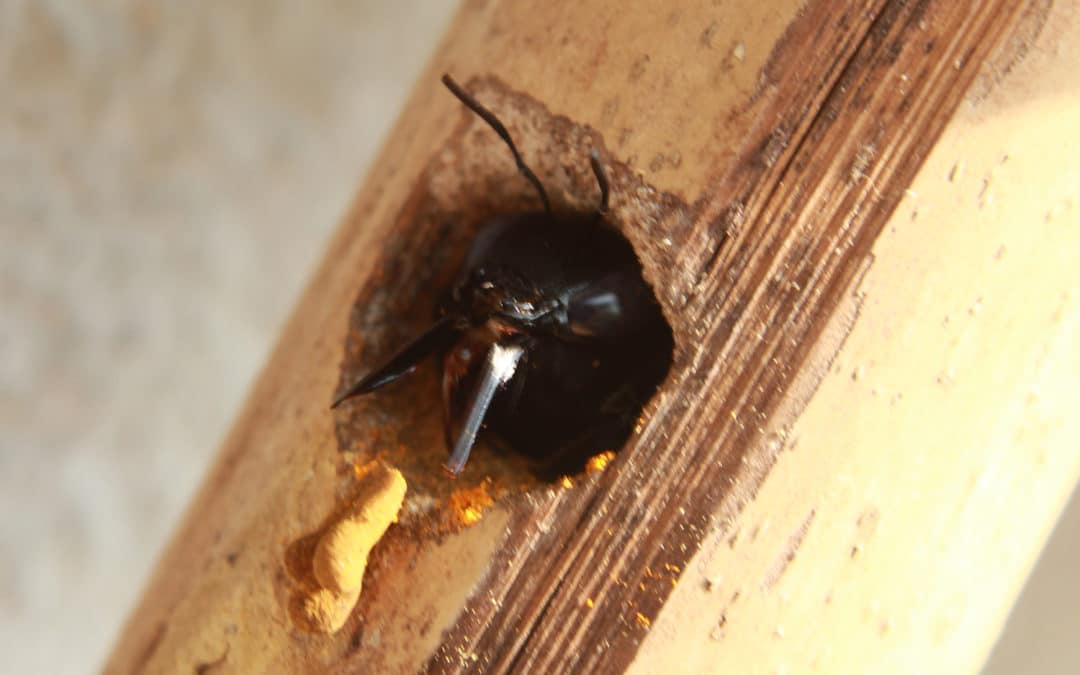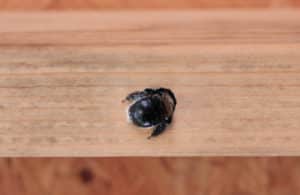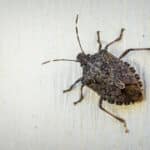As spring transitions to summer, the buzz and flutter of winged insects increase as they work tirelessly from flower to flower. The humble bumblebee is one great example; it’s an expert pollinator, and we can thank it for keeping our plants productive year after year.
However, there’s a bumblebee imposter out there as well. At first glance, it looks the same. If you watch closely, though, the differences will reveal themselves. We’re talking of the carpenter bee, of course. As its name implies, it loves wood, whether it’s a dead and fallen tree or your house.
Identifying Carpenter Bees
A typical carpenter bee looks like a larger bumblebee. Although, if you look close enough, the differences are there. Most notable is the thorax, which lacks the distinctive yellow banding of a bumblebee. A carpenter bee’s thorax is uniformly black.
While a bumblebee’s head is black, a carpenter bee’s head is tinged in yellow. To put it simply, if it’s darker than a bumblebee and larger, then it’s probably a carpenter bee. Much like a bumblebee, carpenter bees are largely uninterested in stinging, and will only do so if handled. In most cases, they’ll leave you alone as long as you leave them alone.
Tunnels, Tunnels Everywhere
While carpenter bees are docile, they are still a threat. That’s because they burrow into wood to build their nests. They are prolific burrowers, too, so it’s not uncommon to discover multiple holes made by these bees. While carpenter bee tunnels are harmless in their natural environment, they can wreak havoc on wooden structures, where they weaken the wood summer after summer.
Carpenter bees love the fascia (the wooden front of your house where the roof is). They also love your wooden shed. Keeping them away from these areas can be a challenge.
Are Carpenter Bees Eating Wood?
People often ask us if carpenter bees are eating the wood that they burrow into. The answer is no; they’re simply excavating tunnels for their nests. They burrow these tunnels to lay a few eggs. Unlike many other bees, carpenter bees are solitary, so a tunnel is made for a single bee and her eggs.
How We Control Carpenter Bees
Carpenter bee control is a multi-step process and how you begin depends largely on the time of year we’re called in to control an infestation. We’ll start from the beginning to illustrate the entire process.
- Spray the affected area with a liquid pesticide to keep carpenter bees away from the area
- Apply desiccating dust to existing holes to kill any existing bees and their eggs
- Once we confirm that the bees have been killed, we plug the holes to ensure no new infestations can easily occur
- Routinely spray parameter with the aforementioned liquid pesticide to ensure no new bees build on your house
The earlier we tackle a carpenter bee infestation, the easier it is to control the population. Spraying pesticide is the easiest method of control; it will proactively keep any interested bees away from your home.






